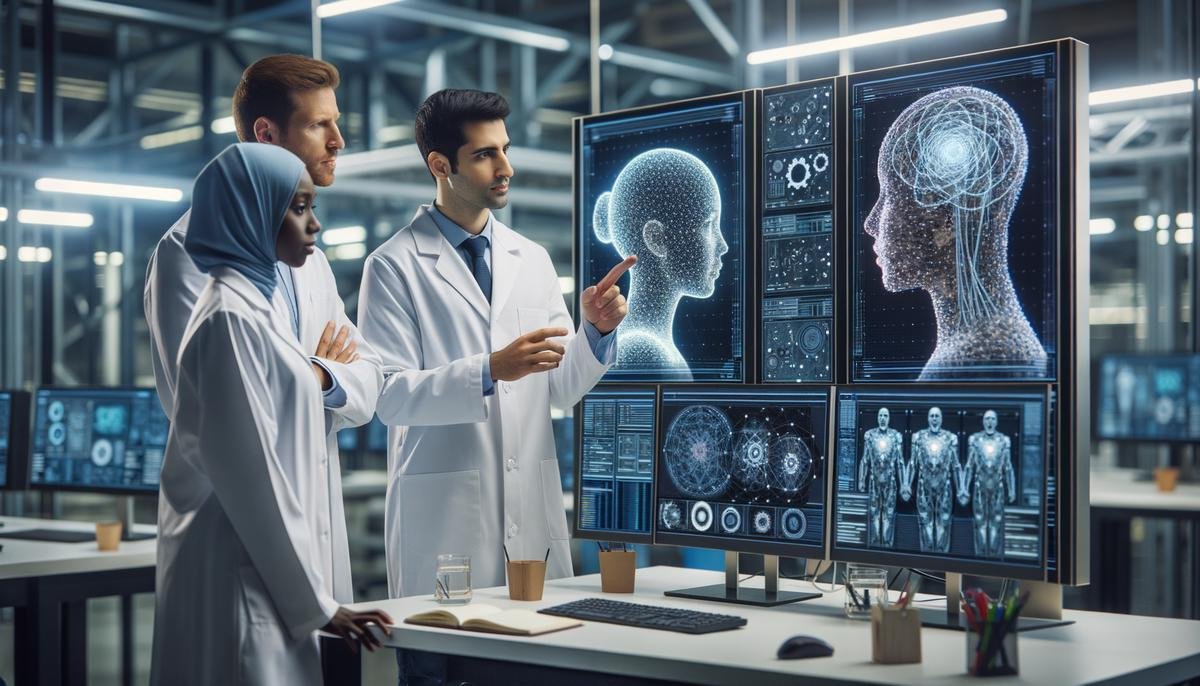Cyborg Psychology
Cyborg Psychology examines how AI systems influence our minds and daily routines. Researchers study the intertwining of digital entities with our thought processes, motivations, and actions. AI might alter how we think, potentially leading to lengthy conversations with virtual companions instead of real friends. This raises questions about human relationships and genuine connection.
Consider a personal assistant offering advice or subtly suggesting products. These interactions can shape belief systems, with AI gradually influencing our perceptions and decision-making processes.
AI systems could affect our motivations. Imagine a chatbot encouraging you to pursue goals you've been avoiding. Researchers are examining how this impacts our drive to succeed.
MIT Media Lab research explores shaping AI-human relationships to help us grow. The goal is to work alongside humans, enhancing intelligence without overshadowing it. Experts see AI's potential as a partner that boosts capabilities rather than just providing answers.
In this increasingly digital age, maintaining a balance between technological advancements and human connection is crucial.

Machine Behavior
Machine behavior involves viewing AI systems as autonomous entities with distinct behavioral patterns. This perspective encourages interdisciplinary research beyond traditional computer science. It considers AI systems operating like living organisms, affecting social, economic, and psychological landscapes.
Researchers at MIT Media Lab argue that understanding AI behavior requires collaboration among scholars from various disciplines. This approach is essential to comprehend how these digital actors are creating their own roles.
This new discipline emerged because AI now makes decisions, takes actions, and sometimes generates unexpected outcomes. Without understanding these behavioral patterns, we risk deploying AI systems without clear accountability or comprehension.
We must consider the societal implications of AI actors influencing our lives. These systems might reshape industries or alter how we address economic disparities.
By introducing the term "machine behavior," researchers call for diverse expert perspectives to study AI's independent behaviors. This challenge promises insights that could lead to innovations improving our collective human experience.

AI Companionship and Addiction
AI companionship blurs the line between beneficial technology and distracting indulgence. These virtual companions reflect our desired traits and preferences, creating an echo chamber that seems perfect but might be problematic.
AI companions can be addictive because they effortlessly fulfill our need for company and validation. Unlike human relationships, they offer constant companionship without criticism or demands. This can overshadow real-world connections.
"Even the CTO of OpenAI warns that AI has the potential to be 'extremely addictive.'"
Developers use complex psychological and economic incentives to maximize user engagement. While we might enjoy an understanding AI friend, this appeal is risky, increasing the potential for dependency.
The economic motivation is clear, with systems designed to keep us engaged, similar to social media platforms. As AI anticipates our needs, we risk choosing these virtual experiences over unpredictable human interactions.
Overreliance on AI companionship might weaken our social skills, leaving us unprepared for real-world challenges. As we explore this new realm of techno-friendship, we must ensure that our use of digital companions enhances rather than replaces authentic human interactions.

Regulatory Approaches to AI
Innovative strategies for AI regulation aim to make these systems safe and beneficial to society. This involves a fusion of policy and ingenuity, focusing on building safety features into AI's core.
- "Regulation by design" is a forward-thinking approach similar to incorporating seatbelts into a car's structure. The goal is to create AI technologies that inherently discourage misuse.
- Alignment tuning involves adjusting the underlying goals and motivations of AI systems to match human values. The aim is to guide AI in the right direction, ensuring its objectives resonate with our shared human experience.
- Legal dynamism highlights the need for adaptable regulations in the face of rapidly evolving technology. This flexibility allows rules to evolve, keeping regulatory measures relevant and in step with AI advancements.
These approaches show that regulating AI isn't just about imposing restrictions. It's about fostering an ongoing dialogue between technology and society, creating frameworks that value innovation while protecting essential human experiences.

As we look to the future, the interplay between humans and AI stands out as a crucial consideration. The key takeaway is the importance of balancing technological advancement with human connection, ensuring that AI serves as a partner in enhancing our lives without overshadowing genuine interactions.
- Rahwan I, Cebrian M, Obradovich N, et al. Machine behaviour. Nature. 2019;568(7753):477-486.
- Mahari R, Pataranutaporn P. The Allure of AI Companions. MIT Media Lab. 2023.




